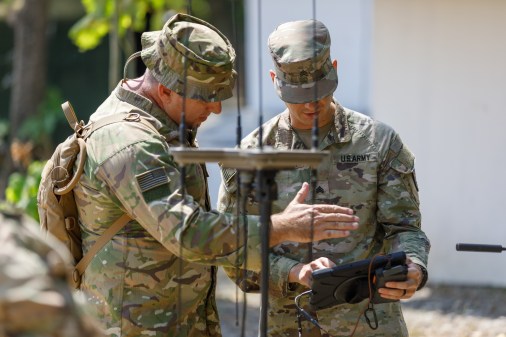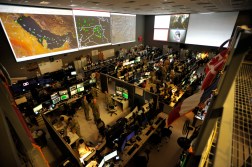New interoperability standards key to implementing Army’s digital engineering strategy

As the Army streamlines its use of digital engineering, the service is promoting new standards that will enable interoperability and data sharing between government- and industry-owned digital environments, according to a senior official.
In May, the Army released a new directive to broadly adopt digital engineering techniques in order to improve weapon systems development — from the early acquisition stages of new capabilities to the sustainment of systems already fielded. Promoting interoperability and implementation throughout the department is one of four lines of effort outlined in the directive, and a critical hurdle will be ensuring that all of the digital engineering technologies the service uses are interoperable with one another.
To that end, the Army is supporting an update to the Systems Modeling Language standard that will be known as SysML 2.0 and is expected to be published before the end of the summer, said Jennifer Swanson, deputy assistant secretary for data, engineering and software. She told DefenseScoop during a roundtable Tuesday that the updated standard will serve as a near-term solution to the data-sharing challenge.
“There have not really been clear standards that digital engineering tools are developed to comply with, and so what we end up with is a lack of interoperability across these tools, which makes that data sharing between environments hard,” Swanson said.
SysML is an industry standard that provides general-purpose modeling language for systems engineering applications. Developed by a consortium of stakeholders from industry, government and academia, the standard supports system specification, analysis, design, verification and validation.
Swanson noted that by implementing the updated standards, vendors working with the Army will be able to share data across their digital environments more easily. Nearly all of the digital engineering vendors have communicated that they will adopt and implement SysML 2.0 “within the next year,” she said.
The inability to share data across multiple digital environments remains one of the top challenges to adopting digital engineering. That includes tools used by different industry partners, as well as those owned by the government, according to Swanson.
“You have the [program manager], who has established their own digital engineering environment using tools. There’s many, many tools on the market, so they’ve selected whatever tools they’ve picked. And then their vendors have digital engineering environments as well,” she said. “The Army is not going to direct everybody to use a certain tool, that doesn’t make sense for us to marry up with one specific vendor or technology.”
Although SysML 2.0 will be helpful for new programs that will leverage digital engineering from the beginning, Swanson noted the Army will also need to address data-sharing issues with programs already underway.
“We will have some challenges still with data that is in current digital engineering environments in terms of, now we have to figure out how to convert that to this new standard,” she said.
As it implements the directive, the Army is currently pulling in lessons from around 20 programs that are already using digital engineering tools as part of their development, such as the XM30 mechanized infantry combat vehicle program and the Future Long Range Assault Aircraft (FLRAA) effort.
The initiatives are two of six “pathfinder programs” identified by the service to act as guideposts for the Army’s broad implementation of digital engineering, each representing a different point of the development and sustainment cycle.
“We’re using these programs to help us take their lessons learned, what is working, what is not working, and be able to adapt all of that for more of an enterprise view across all of our programs to really help everybody else,” Swanson said.
For example, XM30 and FLRAA are both early in the acquisition process. Other pathfinders include the Joint Targeting Integrated Command and Control Suite (JTIC2S) — also in the early stages of acquisition — and the Integrated Fires Mission Command (IFMC), which is currently in production.
To inform sustainment efforts, the Army has chosen the M113 armored personnel carrier as its digital twins can apply broadly to the ground vehicle fleet, as well as legacy aircraft under the Program Executive Office Aviation Logistics Data Analysis Lab.
While these efforts already have experience in using digital engineering tools, Swanson noted they will still benefit from a robust adoption of the technology across the entire Army.
“The one thing that I think they are not benefiting from today is the other communities that we want to make sure we’re operating in these digital environments,” she said. “The requirements community, that test community, the sustainment community — we’re not there yet.”






